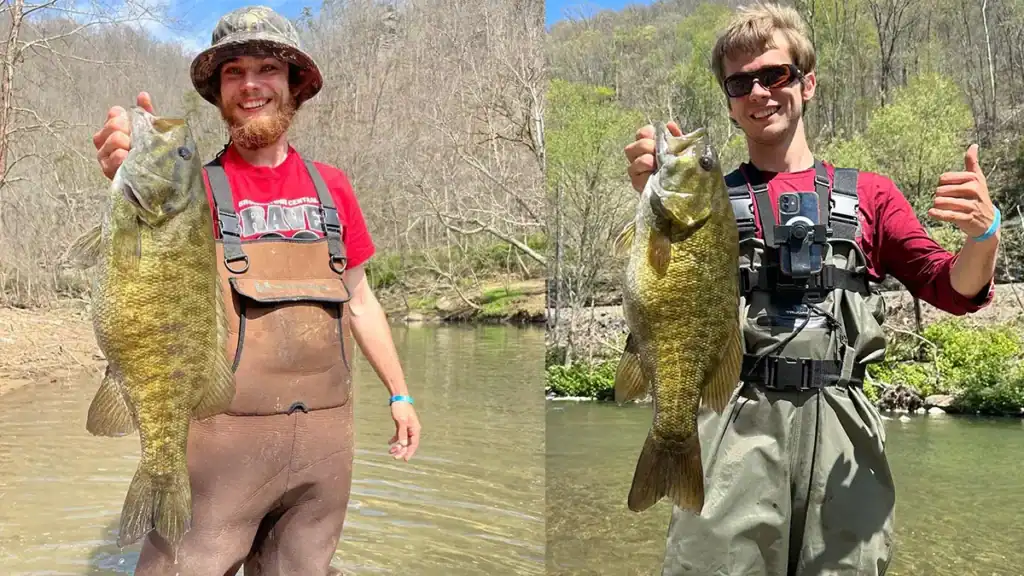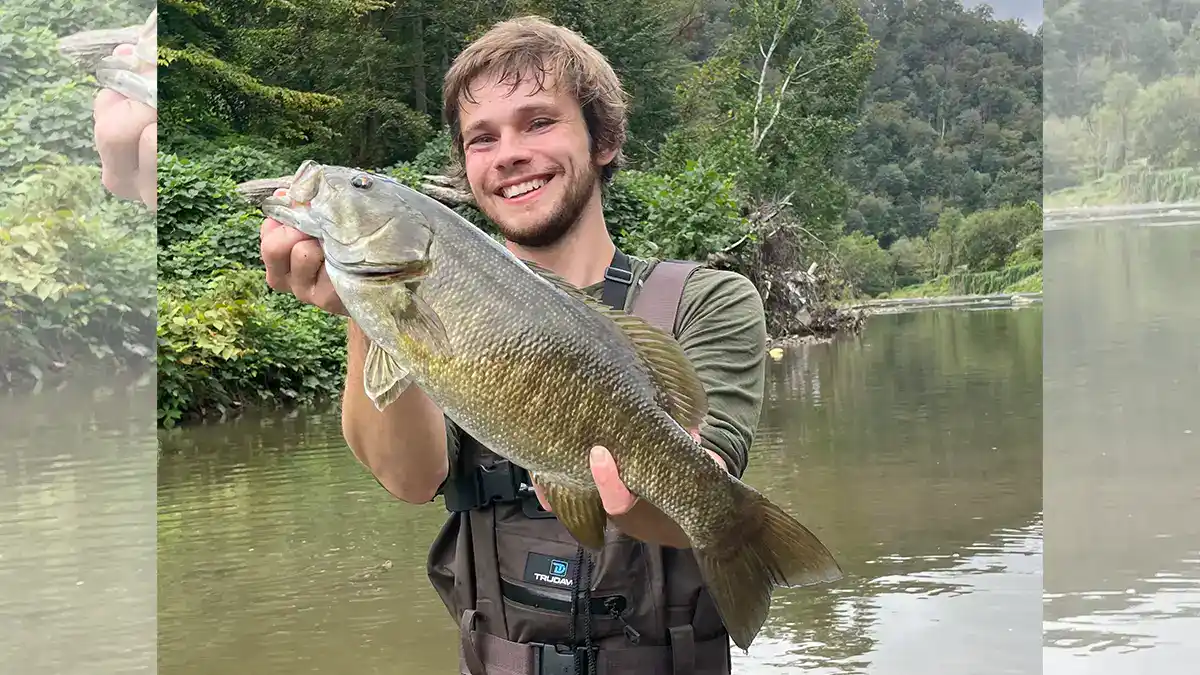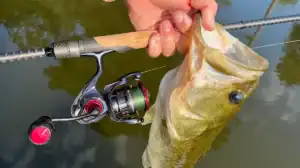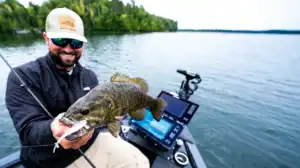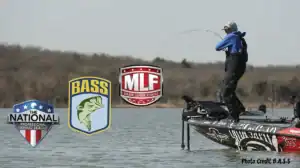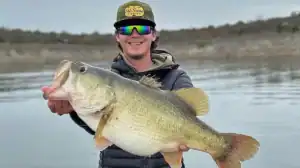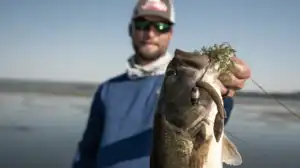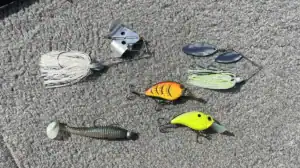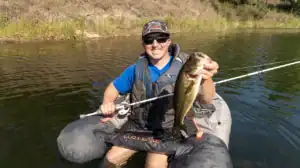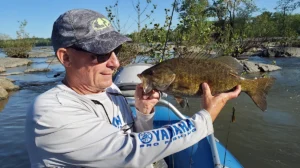The beautiful rolling hill country of Eastern Kentucky, near the Virginia and West Virginia state lines, will be turning into bright autumn colors soon as green timbered hills begin changing to flashy fall hues.
And with that change of scenery and cooler temperatures, fishing in the clear-water and relatively shallow rivers of the region started giving up hefty catches of hard-fighting, high-leaping smallmouth bass.
“We can catch smallmouths almost year-round, but the best fishing starts in October,” 27-year-old Devin Claude Stewart tells Wired2fish. “Almost all our fishing is done wading, and we access the rivers with kayaks until we find good spots to get out and wade.”
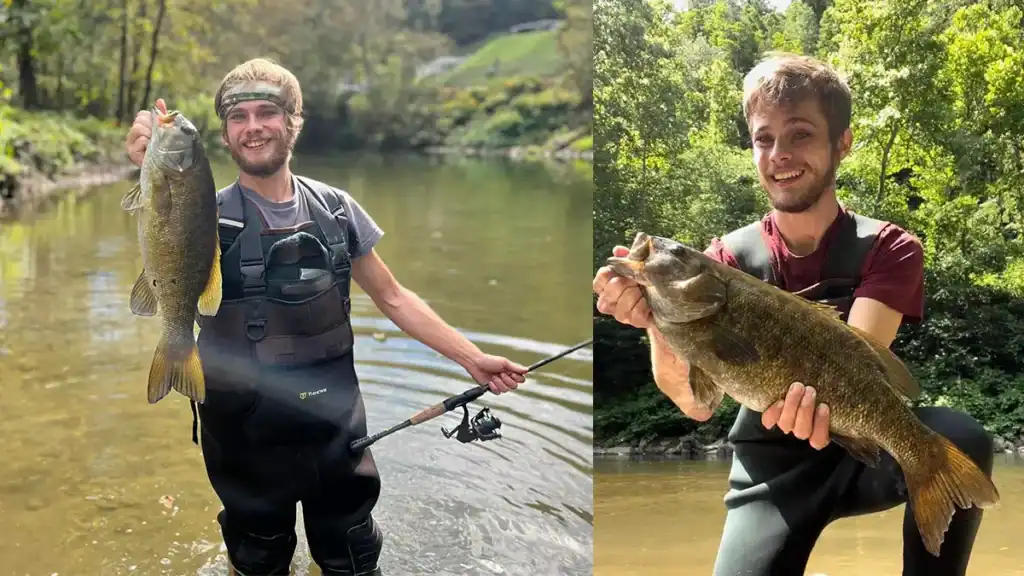
Stewart fishes a variety of different smallmouth streams, but his home waters are the Levisa Fork and the Russell Fork rivers. Both far eastern Kentucky Appalachian Mountain streams are tributary waters of the Big Sandy River.
“The streams are air-clear, and rarely over 4 feet deep in the flowing parts that we fish,” explains Stewart, from the town of Dorton in Pike County. “The best fishing is when the water temperature is in the 60s, which is just about now. We need some rain for increased river flow, but my buddy Logan Shepherd and I are catching some good ones now, and it will get even better”
Stewart said last Friday he caught a 3-pound, 6-ounce smallmouth that was 19 inches long, which was promptly released as are all his bass. “That fish was just short of a Kentucky ‘citation’ fish, which must be 20 inches long.”
Kentucky awards anglers who catch large “citation fish” with a certificate celebrating their hefty catch. The state program covers 28 fish species, congratulating anglers who land trophy-size fish.
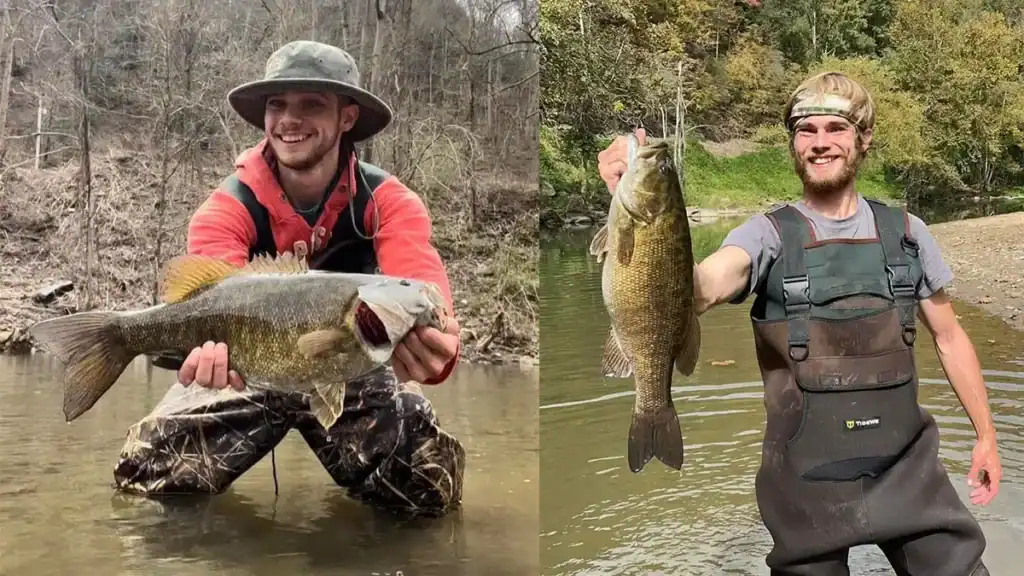
Over the years Stewart has caught 29 “citation smallmouths” from his choice eastern Kentucky rivers. His biggest fish weighed 5-pounds, 3-ounces. He says he and Logan have caught river bass up to six pounds, and he’s sure there are 7-pound smallmouths available in area waters.
“One October day Logan and I had five smallmouths [all released] that weighed 5-pounds, 8 ounces; 5-pounds, 3-ounces; 4-pounds, 12-ounces; 3-pounds, 12 ounces; and 2-pounds, 6-ounces,” Stewart stated. “These are the kinds of fish we catch in the small rivers that are off the beaten path. They have a lot less pressure than other waters like reservoirs and lakes.”
Stewart uses spinning tackle, 12-pound test fluorocarbon leaders tied to 20-pound test main braided line.
A wide variety of lures are effective, he says, including various lipless crankbaits and jigs. Ned rigs work well. Among his favorite jerkbait lures are the Megabass Vision ONETEN and the 6th Sense Provoke.
A resident river baitfish called a “central stoneroller” is deadly for Kentucky river fishing, he says. Stewart rigs such baits with 2/0 octopus hooks, hooking minnows through the lips and freelining them in deep river runs.
“We catch catfish and white bass with baits and on lures,” Stewart explains. “Those are the fish we take to eat. We always release smallmouths after we measure and photograph them.”
